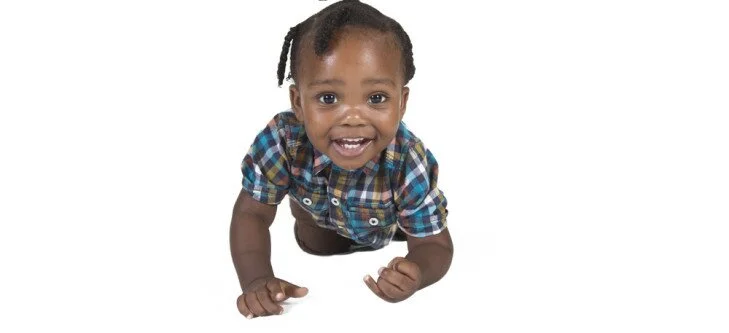Teething is the process by which a baby’s teeth erupt, or break through the gums.
A baby’s first teeth known as milk teeth usually develop while the child is growing in the womb, and rarely some children are born with their milk teeth. Teeth start to appear through the gums during your baby’s first year and this is known as teething.
When babies begin growing teeth at about their 6th month (timing may vary), the two bottom front teeth (lower central incisors) are usually the first to appear, followed by the two top front teeth (upper central incisors) and most children will have all of their milk teeth by the time they are two and a half years old.
Signs And Symptoms Of Teething
Sometimes some teeth grow with no pain or discomfort at all this is because some teeth may be more sensitive than others when they erupt. The larger molars may cause more discomfort due to their larger surface area that can’t “slice” through the gum tissue as an erupting incisor is capable of doing. Mothers may notice that while teething
- their baby’s gum may be red and sore where the tooth is coming through
- baby may bite, gnaw and chew a lot, or just be restless
- baby may rub his gum
- he may be sucking on his fingers or any one’s
- baby may be irritated and restless.
- sleeplessness
- ear rubbing as a result of pain during the eruption of the molars
- rash around the mouth due to skin irritation caused by excessive drooling
- mild temperature
- increased drooling
- his appetite may decrease
Some mothers however say their babies have diarrhea and fever while teething although no research has proved that these symptoms are linked with teething. These might signal something different from teething symptoms, so if you notice anything that doesn’t look right contract your doctor.
How To Soothe Your Baby’s Sore Gum
- Use a clean finger or use a soft baby’s tooth brush to gently rub your baby’s gum for about 2 minutes at a time. Many babies find this soothing, although at first they may protest .
- Provide your baby with safe objects that is hard for your baby to chew on, i.e. a teething ring or any toy or object that is clean and easily held in their hand, but which cannot hurt them and will be able to withstand the chewing. It may also help to cool the ring or toy by putting it in the fridge (but not the freezer) beforehand.
- If needed, give your baby an over-the-counter pain reliever such as infant paracetamol that is labeled for his or her specific age, this might help. Avoid teething medications that contain the pain reliever benzocaine.
- If your baby is over six months old you can give them pieces of raw fruits and vegetables, such as apples, celery and carrots, you can chill the fruits first. You can also give them a piece of bread or teething biscuit.
- And if your baby is dribbling excessively you can give him cold water to drink
- Dry the drool, excessive drooling can make your baby have rashes around the mouth.
How To Keep Your Baby’s New Teeth Healthy
You can start caring for baby’s gums right away. Even before your baby sports his first tooth, it’s a good idea to get into the habit of wiping his gums with gauze or a soft wet washcloth during bath time. For a start, the care won’t involve a toothbrush and toothpaste. You can follow the following steps:
- By age 1 take your baby to his first dental exam, so that the dentist may go over feeding and cleaning habits, plus check for early signs of tooth decay.
- Brush twice a day. Brush in the morning and right before bedtime.
- Brush your infant’s teeth with clean water e.g. dispenser water. Also you may use a tiny amount of fluoride tooth paste, the size of a grain of rice. Since too much fluoride can cause brown or white spots on incoming teeth, you can wait until age 2 to use pea-size amounts of fluoride toothpaste.
- Brush gently on the inside and outside of each of your baby’s teeth, as well as her tongue (if she’ll let you), to dislodge bacteria that can cause bad breath. Since you’re using such a small amount of toothpaste, there’s no need to rinse.
- Milk or juice that sits in the back of the top two front teeth can cause cavities so don’t let kids fall asleep with a bottle or cup.
Helpful? Mamalettes are you going through similar issues or you know someone that is ? Visit our forum or post your questions and comments below.
Comments
Comments

